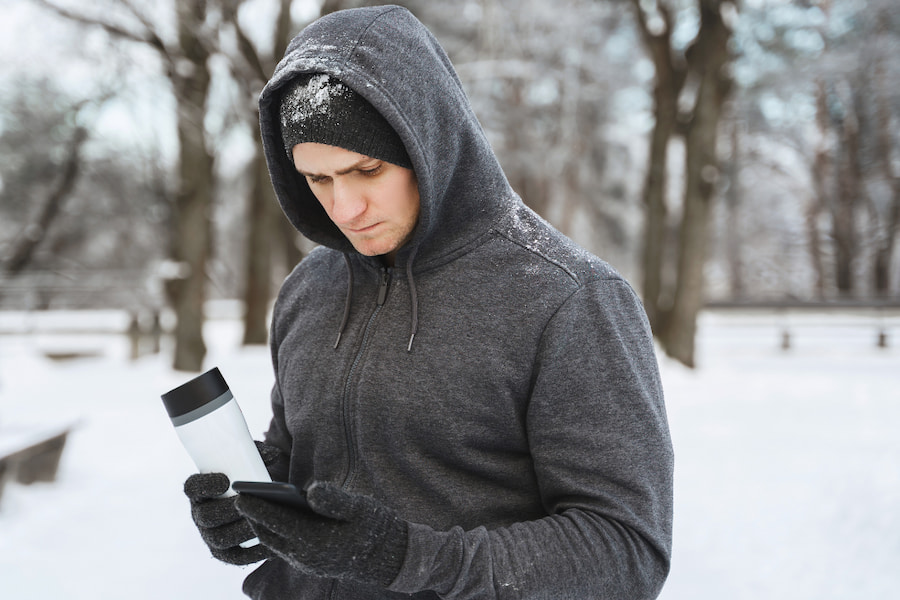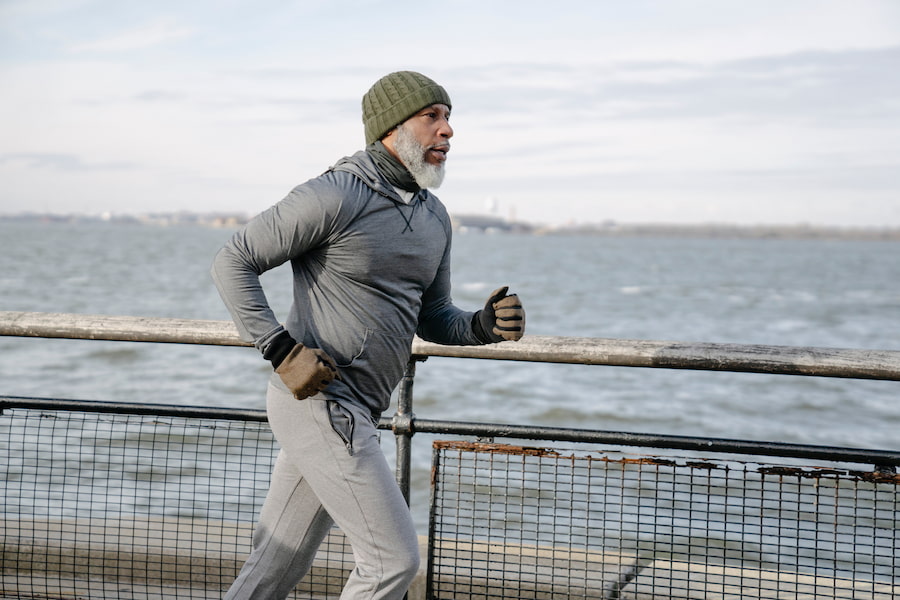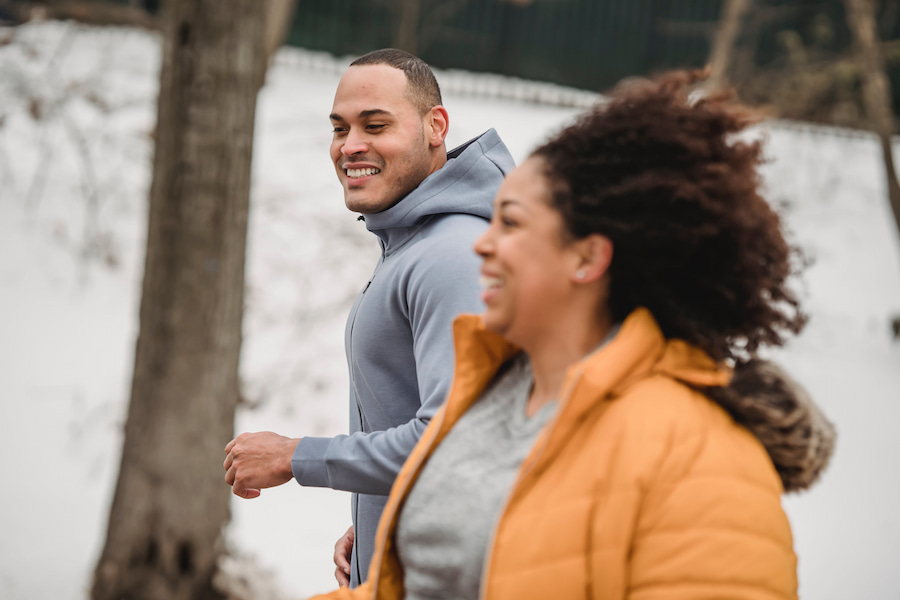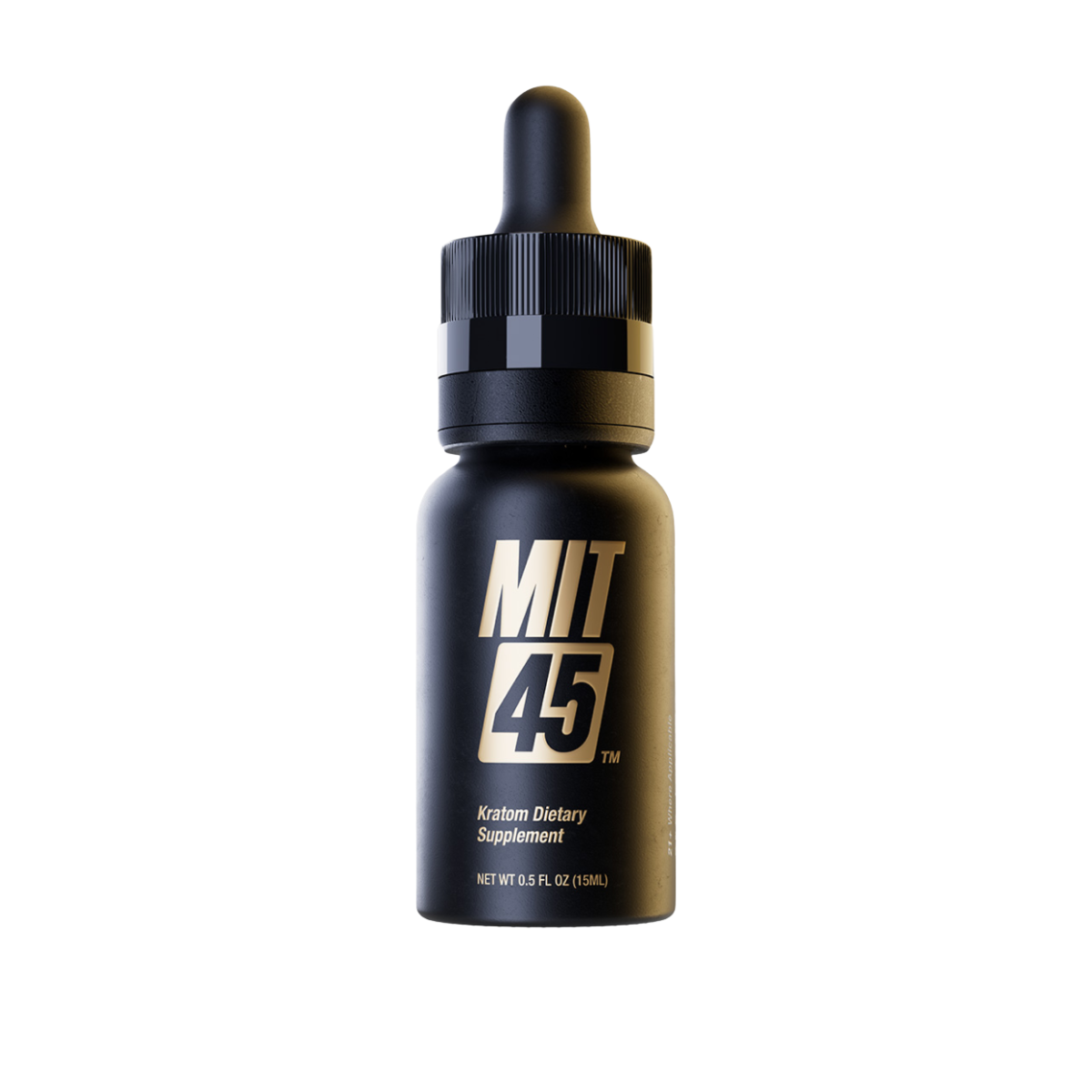As the weather gets chilly, it may feel challenging to fit fitness into your schedule. Despite shorter daylight hours and colder temperatures, there are plenty of ways to start (or continue) making physical activity a regular part of your routine.
Worried about working out in the winter? Discover helpful safety tips and ideas for keeping fitness a sustainable aspect of your schedule (even when it’s snowing).
How to Make Winter Workouts Work for You
If you’ve never worked out in cold weather, the idea of stepping into the wintry chill can sound intimidating, and leave you full of questions. What do I wear to stay warm, but not sweaty? How can I protect myself from slips and falls on the ice? Do I need to drink water or apply sunscreen if it’s overcast?
The following tips can answer your questions, make you feel more confident, and keep you safe as temperatures drop. Even though winter workouts may require taking a few extra precautions, many people find the chill refreshing, and actually enjoy working out in the winter more than working out in summer months.
Schedule It
If you’re struggling to find time to exercise in the winter, it can be helpful to block out specific times in your calendar for physical activity. This tip is useful year-round, but especially in the winter when schedules can get busy with holiday get-togethers. Keep in mind that with shorter daylight hours, you may need to shift outdoor workouts to later in the morning, or earlier in the evening, when the sun is out.

Continue to Hydrate, Even In Cold Weather
Dehydration can happen anytime of year, even in the winter. In fact, you may be more likely to get dehydrated in cold weather. Even when you can’t see visible sweat loss, it’s important to hydrate before, during, and after a workout. For a cold weather alternative to water that’s packed with electrolytes, try bone broth.
Check the Weather
Luckily, most forecasts give you a few days’ notice of what conditions will look like. It’s important to remember that these are predictions— in other words, it’s best to “plan for the best, and prepare for the worst,” since conditions can change without much warning.
Typically, temperatures in the 40s or 30s Fahrenheit can still be conducive to walking, running, or cycling (if that’s what you are used to and weather conditions aren’t too severe). However, even for avid outdoor athletes, excessively windy, cold, or wet weather can make conditions unsafe. It’s also crucial to keep in mind that wind, rain, ice, or snow can make a cold day feel even colder, especially if your clothes are damp. Recognizing the following signs of hypothermia, when body temperature drops below 95℉ and can’t keep warm, and seeking help if you see any of the signs, can literally be life-saving:
- Cold hands or feet
- Confusion or slurred speech
- Extreme fatigue or sleepiness
- Lack of coordination or slow reactions
- Shivering for longer periods of time
When the sun does emerge after a wintry spell, melting snow and ice can make surfaces and sidewalks slippery. Slips and falls can get in the way of your workout plan, and uneven surfaces are especially risky. So, it may be worth sticking to well-shoveled paths or tracks, or using walking poles for stability if you’re worried about slippery surfaces.
Another aspect of sunny winter weather to keep in mind is that you still may need sunscreen. If you’re outside for longer than 15 minutes, you may need to protect your skin with sunscreen, or protective clothing (like a hat). Certain activities, like skiing, may also increase your risk for a sunburn, since snow reflects sunlight.

Cozy Up Your Workout Wardrobe
Wearing appropriately warm winter clothes is key to having a successful winter workout. The proper clothes can keep you physically safe, and also offer you peace of mind in changing weather conditions. The best clothes fit the activity, with a few key features.
For a winter workout, it’s important to wear several layers of loose-fitting clothing. This makes it possible for heat to get trapped between layers, much like insulation in a house. Loose-fitting clothing, as opposed to tight-fitting clothing, also allows for blood to flow freely, which can prevent loss of body heat.
Layers can easily be removed and put back on, promoting a balance in body temperature that avoids extremes (overheating or becoming too cold). The following layering method can help you to stay safe and warm:
- Inner Layer– Choose moisture-wicking fabrics (available from many sportswear brands) to help keep skin dry. Cotton is not optimal, since it absorbs moisture. Instead, seek out polyester blends, polypropylene, or other types of synthetic material.
- Middle Layer– Choose fleece or wool for this layer to encourage insulation. Avoid cotton here as well, since it may absorb sweat and leave you feeling colder as a result.
- Outer Layer– Choose a waterproof, breathable coat or jacket that’s capable of withstanding snow, rain, wind, and water. Keep in mind that this layer can be removed at any time that rain, wind, or snow aren’t present, and then put back on during rest periods.
- Shoes & Socks– Wear heavy socks and sturdy, well-fitting shoes suited to the activity (such as sneakers for running, boots for hiking, or properly fitting skates for ice skating). Some waterproof options are available.
- Other Accessories– Hats, scarves, and gloves can be helpful in keeping you warm. In particular, gloves should protect hands and fingers (options with removable layers or those lined with wool or fleece often work best). Some hats are made with special fabrics to wick away sweat while also keeping you warm.
Think about your wardrobe from head to toe, and make adjustments as needed! For example, if you wear glasses, they may fog up easily. It may be better to opt for contacts to improve visibility.

Workout With a Friend
Winter workouts are a perfect opportunity for connecting with friends, family members, or loved ones. Having a friend nearby during outdoor workouts can keep you safe in the case of slips and falls. They may even be able to spot the symptoms of hypothermia more quickly than if you were by yourself.
A friend may also be able to give you ideas of fun winter workout options (like skiing) that you may normally not consider. Basically, a winter workout buddy can help foster connection and accountability while also keeping you safe from the health threats winter weather can present.
Regardless of whether or not you’re working out with someone else in person, it’s a good idea to let someone know where you are or where you’re going when you’re working out in the cold. Keep a fully charged cell phone on you so that you can be contacted or contact others in the case that weather suddenly gets severe, or slips happen.
Support For Your Winter Workout Schedule
Working out seems to be most effective when other healthy habits are put into place to support it, such as meal planning. If you’re looking for a form of herbal support to help you stay motivated, kratom may be a good fit. Many kratom users describe it as energizing, and options with caffeine may help you keep your eye on the prize, even if it’s dark outside when you wake up.
Summing Up Steps for a Safe & Sustainable Winter Workout
Initially, working out in the winter may seem like too much effort. However, a few simple steps can make cold weather workouts worth it! Layering clothes appropriately, checking the forecast beforehand, and taking a workout buddy along with you can make for a safer experience. If you’re having trouble staying consistent, scheduling workouts or incorporating kratom may help you stay motivated.
Looking for more information on kratom and exercise? Explore our resources on herbal pre-workout.
References
American Heart Association. How to Stay Active in Cold Weather. Heart.org. Published December 2016.
Centers for Disease Control and Prevention. 6 Tips to Stay Active This Winter. Cdc.gov. Published June 2022.
Cleveland Clinic. How to Stay Active Outside When the Weather Gets Colder. Health.clevelandclinic.org. Published December 2020.
Ellis E. Family Exercise Ideas for Every Season. Eatright.org. Published January 2021.
Ellis E. Hydrate Right. Eatright.org. Published December 2020.
Harvard Health Publishing. The wonders of winter workouts. Health.harvard.edu. Published December 2018.
Jesner L. 8 Workouts That Are Perfect for Winter. Everydayhealth.com. Published March 2022.
National Institute on Aging. Five Tips for Exercising Safely During Cold Weather. Nia.nih.gov. Published October 2023.
National Institute on Aging. Safety Tips for Exercising Outdoors for Older Adults. Nia.nih.gov. Published April 2020.
Wagner AL, Keusch F, Yan T, Clarke PJ. The impact of weather on summer and winter exercise behaviors. J Sport Health Sci. 2019;8(1):39-45.




